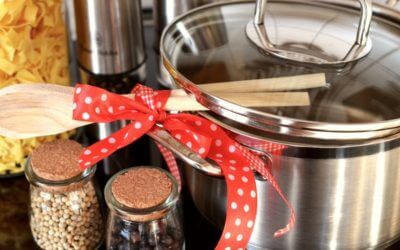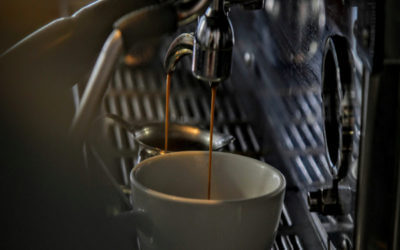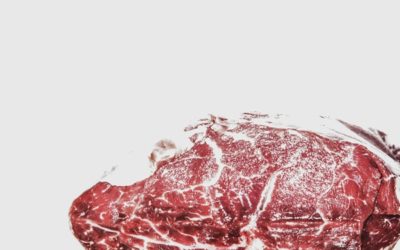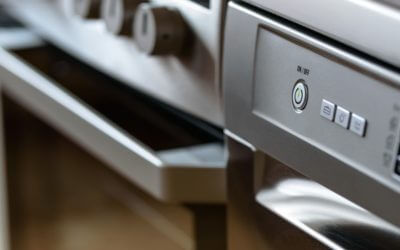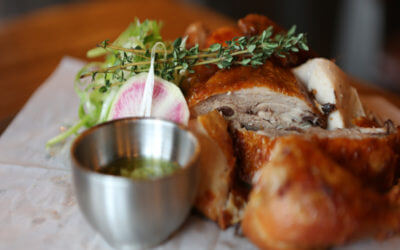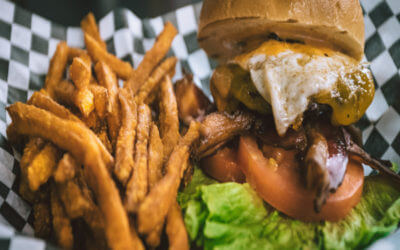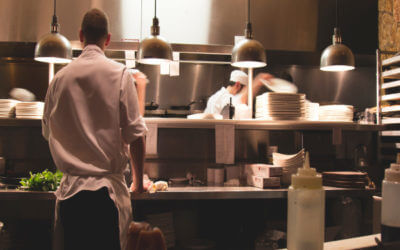The Oven Starter Guide: Convection or Conventional?
January 8, 2018Ready to get a new oven for your restaurant? This essential piece of kitchen equipment plays a central role in much of your cooking and baking, so it’s important to choose something that’s right for your restaurant’s needs.
When it comes to ovens, one question frequently arises: “Should I choose a convection oven or a conventional one, and what’s the difference anyway?”
Many people are in the dark when it comes to the best uses for each kind of oven. Well, today we’re going to dive into it so you can decide which kind of oven should join the rest of your kitchen equipment.
The one feature that sets convection ovens apart
If you can’t tell the difference between a convection and a conventional oven, you’re not alone. In fact, both types of kitchen equipment are very similar. They each have a single source of heat (typically at the bottom of the oven), but convection ovens have one feature that conventional ovens don’t have.
That feature? An extra fan and exhaust system. This system blows the hot air evenly through the whole oven during cooking. This gives rise to several benefits that many chefs love, making the convection oven a handy piece of kitchen equipment. However, it’s not for everyone. Check out our convection oven pros and cons before deciding on your new kitchen equipment.
What We Love about Convection Ovens as Kitchen Equipment
- Evenly cooked dishes. Because convection ovens fill the entire space evenly with heat, commercial kitchens using convection ovens produce more evenly cooked or baked dishes.
- Faster cooking. The consistent heat and lack of cold and hot air pockets make convection ovens efficient pieces of kitchen equipment. Most dishes cook faster in a convection oven.
- Food is crisper. A convection oven’s exhaust system vents moisture out of the oven, making your dishes nice and crisp. It’s a great piece of kitchen equipment for cooking dishes like crisp vegetables, oven fried chicken and potatoes.
What We Don’t Love about Convection Ovens
Convection ovens aren’t perfect for every recipe. It’s important to note this when choosing your new kitchen equipment. Here are a few downsides of convention ovens.
- Irregular rising. A convection ovens isn’t the best piece of kitchen equipment for recipes that involve rising. The surrounding heat can cook the outside of your bread or muffins before they are done rising, resulting in bumpy textures and lopsided batters. A conventional oven is a better choice if you do a lot of baking in your commercial kitchen.
- Drier food. The venting system we mentioned earlier is great for creating crisp fries and vegetables, but it’s not good news for moist foods like bread and soufflé. The lack of moisture within the oven can result in dried-out dishes. So if you cook dishes that need to rise or stay moist, a conventional oven is the best choice for your kitchen equipment.
When buying your next oven, think about the kinds of foods that make up your menus, and whether a convection or conventional oven is best suited to the job. Both types of ovens can come with electric or gas stoves, so you have the freedom of choosing what works best for you in both departments. If you need help deciding, we at Tipton Equipment are always happy to help.
What’s in a Cooking Pot, How to Choose the Right One?
As a restaurant owner, your cooking needs might vary. Did you know that a good quality pot can greatly improve your cooking experience, while also improving the quality of your cooking? This cooking equipment is a very important one that cannot be done away with...
5 Things Every Restaurant Owner Should Do Before Buying Used Kitchen Equipment
Equipping your restaurant properly can cost a lot of money, so buying used kitchen equipment is the go-to choice for many restaurateurs. Buying used kitchen equipment for a restaurant is a bit different than buying used equipment for your home, however. You will...
Top Restaurant Technology Trends in 2018
When looking to buy restaurant supplies, you want to be on the leading edge of technology trends. This will keep your kitchen running smoothly. Let’s take a look at some of the most recent trends in restaurant supplies technology. 1. New Payment Options Who would...
5 Different Ice Shapes and Why You Should Care About Them
Ice makers are very popular in the restaurant and foodservice community because they eliminate the need to buy ice every day. And of course, adding an ice maker to your collection of foodservice equipment means you will always have ice on hand when you need it. An...
Pulping and Grinding: A Starter’s Guide to Reducing Commercial Food Waste Costs
For most restaurant owners and managers, the expenses involved in making meals are always under careful consideration. Water is needed to prepare, cook and wash food; power is necessary for food prep, cooking and cooling, and so on. However, how many of us consider...
Choosing the Right Milk Cooler: Cold Wall or Forced Air?
In a restaurant, milk is an essential to have on hand for coffee and other café-style beverages, for serving with kids’ meals, and as a key ingredient in many recipes. Keeping your milk properly chilled can be difficult without the proper restaurant equipment....
How to Choose Your Next Commercial Meat Smoker
The movies that connect with us on a personal level are the ones that linger in our memories forever. Anyone who has used a commercial meat smoker knows that they have a huge influence on the taste of a meal. You need to have just the right kitchen equipment to get a...
Are High Speed Ovens Too Good to be True?
You might have heard a few of the bold claims that foodservice equipment manufacturers have been making about high speed ovens, but they can’t be possible, right? Cooking three times as faster as regular ovens? Five times as fast? Fifteen times as fast? It may seem...
Choosing the Right Food Storage Containers for Your Restaurant
Choosing the right kitchen supplies will make a difference in your restaurant. Whether it is heavy duty kitchen equipment or food storage containers, each piece of equipment plays its own important role. Today, we are going to talk about how to choose the right food...
Tipton’s Guide to Perfect Poultry Trussing
Do you ever truss birds in your commercial kitchen? Trussing is a fantastic cooking technique because it makes poultry cook faster, look more attractive and taste better. If your commercial kitchen prepares poultry, you don’t want to miss these trussing tips. Trussing...
How to Eliminate Excess Condensation in Your Kitchen
Is your commercial kitchen getting steamy? If so, you could have more than just an uncomfortable working environment on your hands. Excess moisture in your commercial kitchen can result in the corrosion of equipment, the development of mold, and even damage to your...
The DIY Guide to Your Restaurant’s Own Garden
Stocking your restaurant supply with your own home-grown herbs and produce can truly bring your dishes to life. When it comes to food, everyone knows there’s nothing like homemade and home-grown. Having your own culinary garden, however large or small, can help you...
5 Reasons a Meat Grinder Will Set Your Burgers Apart
The more you do to prepare your foods in-house with the right kitchen equipment, the fresher and more flavorful your dishes become. There are all sorts of restaurants offering fast-food style burgers, but some diners are looking for the real deal. A fresh, juicy...
Pest Preventions to Implement in Your Commercial Kitchen
Restaurant pests: it’s something that few people want to think about. Like it or not, pest management is an essential consideration for every commercial kitchen. Offering food, shelter and water, the unprepared commercial kitchen naturally provides everything pests...
Choosing the Right Material for Your Cooking Equipment
Kitchens are very unique to their chef. Just like a car mechanic has a toolbox unique to them, so is the cooking equipment in a kitchen. And over time, the same cooking equipment become a natural extension of the chef. What tools are you using in your kitchen? It...

